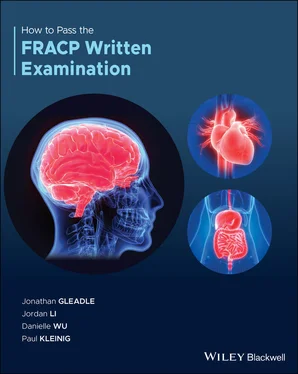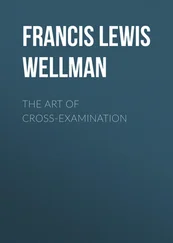In a recent large trial, patients were randomly assigned to daily intravenous pantoprazole (40 mg) or placebo during their ICU admission. The patients were at high risk for gastrointestinal bleeding because of a history of liver disease, coagulopathy, shock, treatment with anticoagulant agents, renal replacement therapy, or mechanical ventilation that was expected to last for more than 24 hours. There was no significant difference between the groups in the rate of the primary outcome of death nor gastrointestinal bleeding, pneumonia, C. difficile infection, or myocardial ischemia. A further study of use with PPIs vs histamine H 2–receptor antagonists for stress ulcer prophylaxis among adults requiring mechanical ventilation did not result in a statistically significant difference for in‐hospital mortality.

Barkun A, Bardou M. Proton‐Pump Inhibitor Prophylaxis in the ICU — Benefits Worth the Risks? New England Journal of Medicine. 2018;379(23):2263–2264.
https://www.nejm.org/doi/full/10.1056/NEJMe1810021
15. Answer: D
AKI is a frequent complication associated with septic shock in patients who require ICU admission. AKI is also associated with an increased mortality rate in these patients.
In a large, multicenter, RCT, patients with early‐stage septic shock with severe AKI based on the failure stage of the risk, injury, failure, loss, and end‐stage kidney disease (RIFLE) system but without life‐threatening complications of AKI were randomised to either receive dialysis within 12 hours after documentation of AKI (early dialysis) or 48 hours after the AKI if no renal recovery was observed (delayed dialysis).
The failure stage of the RIFLE classification system is characterised by a serum creatinine level 3 times the baseline level (or ≥4 mg/dL with a rapid increase of ≥0.5 mg/dL), urine output less than 0.3 ml per kilogram of body weight per hour for 24 hours or longer, or anuria for at least 12 hours.
The trial was stopped early for futility after the second planned interim analysis showed no significant difference in overall mortality at 90 days in the early dialysis vs. delayed dialysis groups.

Barbar S, Clere‐Jehl R, Bourredjem A, Hernu R, Montini F, Bruyère R et al. Timing of Renal‐Replacement Therapy in Patients with Acute Kidney Injury and Sepsis. New England Journal of Medicine. 2018;379(15):1431–1442.
https://www.ncbi.nlm.nih.gov/pubmed/30304656
16. Answer: C
This patient is in septic shock, likely of urinary origin. Sepsis and septic shock are medical emergencies and treatment and resuscitation should begin immediately. Latest guidelines dictate that following initial fluid resuscitation, administration of additional fluids should be guided by frequent assessment of haemodynamic status. This includes thorough clinical examination including blood pressure, heart rate, respiratory rate, temperature, oxygen saturation and urine output.
Previous resuscitation guidelines in septic shock have recommended a protocolised approach, known as early goal‐directed therapy (EGDT) which described the use of goals that included central venous monitoring and serial haemoglobin monitoring. Previously, the EGDT dictated that early placement of a central venous catheter (CVC) improved outcomes in patients with septic shock. However, this approach has now been challenged following the results of three large, multicentre RCTs which showed no mortality benefit, as discussed in the Protocolised Resuscitation In Sepsis Meta‐Analysis (PRISM). New evidence found that the use of CVP alone to guide fluid resuscitation can no longer be justified given the limited ability of CVP to predict a response to a fluid challenge when the CVP is within a relatively normal range (8–12 mmHg).
Recommended volume of fluid resuscitation starts at 30 mL/kg; however, the balance of additional fluids and the use of vasopressors remains uncertain. Several clinical trials are underway which will evaluate this, however currently the goal of fluid resuscitation should be targeted at a mean arterial pressure (MAP) of 65 mmHg through the use of fluids and vasopressors, while normalising the lactate level. Two clinical trials show the potential for harm with starch‐related intravenous fluids, but limited evidence to support the use of colloids over crystalloids. (Starch trial: https://www.nejm.org/doi/full/10.1056/NEJMoa1204242and ALBIOS trial: https://www.nejm.org/doi/full/10.1056/nejmoa1305727). There is emerging evidence for the use of balanced crystalloid solutions over 0.9% sodium chloride (SMART trial, https://www.nejm.org/doi/full/10.1056/NEJMoa1711584). There is also some emerging evidence for fluids potentially leading to higher mortality (FEAST trial, https://www.nejm.org/doi/full/10.1056/NEJMoa1101549).
In summary:
Septic shock is a medical emergency and resuscitation should begin immediately.
Initial fluid volume administered should start at 30 mL/kg.
Further fluid administration should be based on haemodynamic status as determined by physiologic parameters (BP, HR, urine output, oxygen saturation and temperature).
A target MAP of 65 mmHg may be used for vasopressor and fluid adjustment.
Serial measurement of CVP, Scvo2 and haemoglobin using a CVC is no longer recommended.

Berger R, Rivers E, Levy M. Management of Septic Shock. New England Journal of Medicine. 2017;376(23):2282–2285.
https://www.nejm.org/doi/full/10.1056/NEJMclde1705277?url_ver=Z39.88‐2003&rfr_id=ori:rid:crossref.org&rfr_dat=cr_pub%3dpubmed

Rhodes A, Evans L, Alhazzani W, Levy M, Antonelli M, Ferrer R et al. Surviving Sepsis Campaign: International Guidelines for Management of for Management of Sepsis and Septic Shock: 2016. Critical Care Medicine: 2017; 45: 486–552. https://journals.lww.com/ccmjournal/Fulltext/2017/03000/Surviving_Sepsis_Campaign___International.15.aspx
17. Answer: B
Severe asthma is defined as uncontrolled asthma despite adherence to maximum optimised therapy and treatment of contributing factors or that exacerbates when high‐dose treatment is decreased. Patients with severe asthma suffer a substantial burden of symptoms, exacerbations, and side effects from medications. Patients with comorbidities such as severe sinus disease, recurrent respiratory infections, sleep apnoea, and gastroesophageal reflux experience more frequent recurrent exacerbations of severe asthma.
According to Global Initiative for Asthma (GINA) guidelines, approximately 50% of patients with severe asthma have type 2 inflammation which is characterised by eosinophils, increased fractional inhaled nitric oxide (FeNO), and cytokines such as interleukin [IL]‐4, IL‐5, IL‐13. GINA guidelines do not suggest use of exhaled nitric oxide to guide therapy in patients with severe asthma.
Mepolizumab is a humanised immunoglobulin G1 kappa monoclonal antibody specific for IL‐5. It binds to IL‐5 and stops IL‐5 from binding to its receptor on the surface of eosinophils. Therefore, it reduces blood, tissue, and sputum eosinophil levels. It is indicated for add‐on maintenance treatment of patients with severe asthma and with an eosinophilic phenotype.
Читать дальше
















